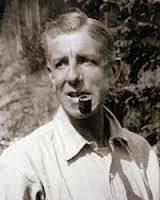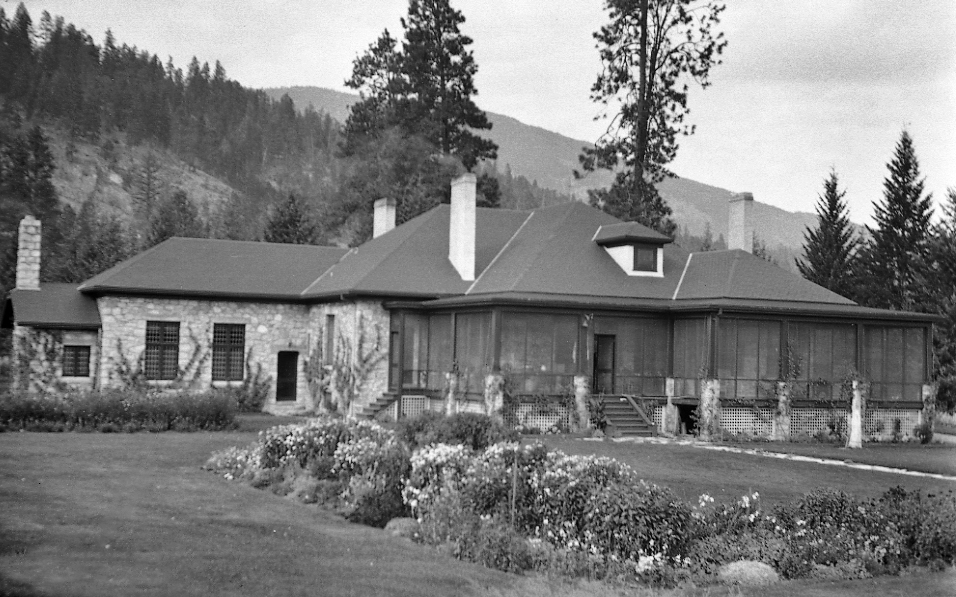Building an Estate
Irrigation was vital in the Okanagan. Dun‑Waters used the force of the waterfall on Shorts Creek to irrigate the orchards and to produce electricity for the estate. With the help of his men, Dun‑Waters first buried a network of wood stave, wire-wrapped, or cast-iron pipe all over the delta, then dammed Shorts Creek above the middle falls. Water was piped across the gorge by a unique suspension bridge system. From there it was carried down to the delta. There was terrific water pressure by that time, enough to grind grain, run a sawmill and channel water through underground pipes to all the houses, gardens and orchards. Fintry had running water and spray irrigation years before anyone else on the delta. Neighbours were still using pails, pumps or relying on open ditch irrigation.
Dun‑Waters installed a Pelton wheel generator in the Shorts Creek channel, an engine that was powered by water, which provided electricity to the entire estate. The Manor House, dairy barn and most of the estate’s buildings had electricity. The curling rink was also lighted, with overhead lights to illuminate the throws when the men played before dawn. The packinghouse was fitted with a second Pelton wheel turbine in 1924 to generate electrical power for the cold storage and the fruit-sorting machine. Fintry also had its own telephone system with seven phones on the exchange, connecting the Manor House, Burnside, the White House, the dairy barn, the packinghouse, the powerhouse and High Farm.



